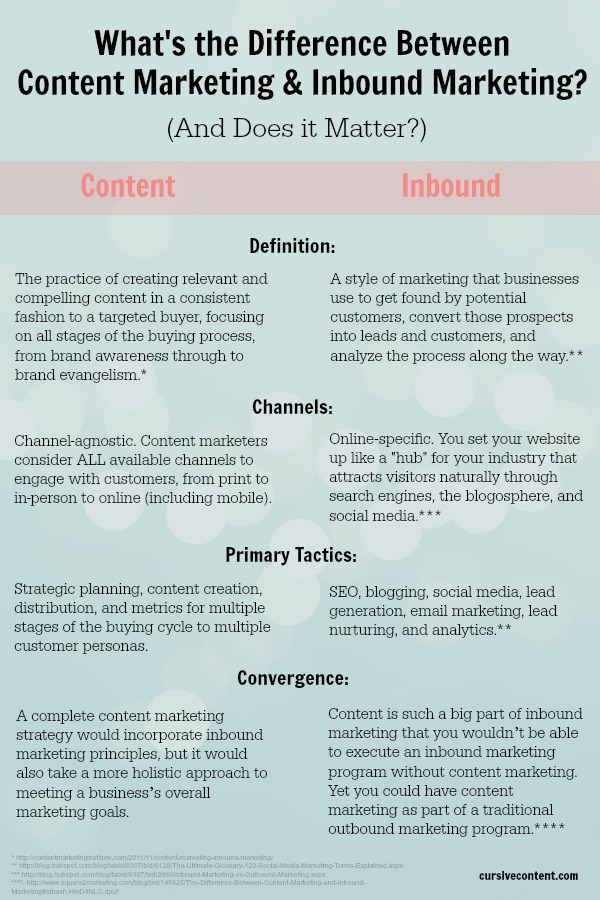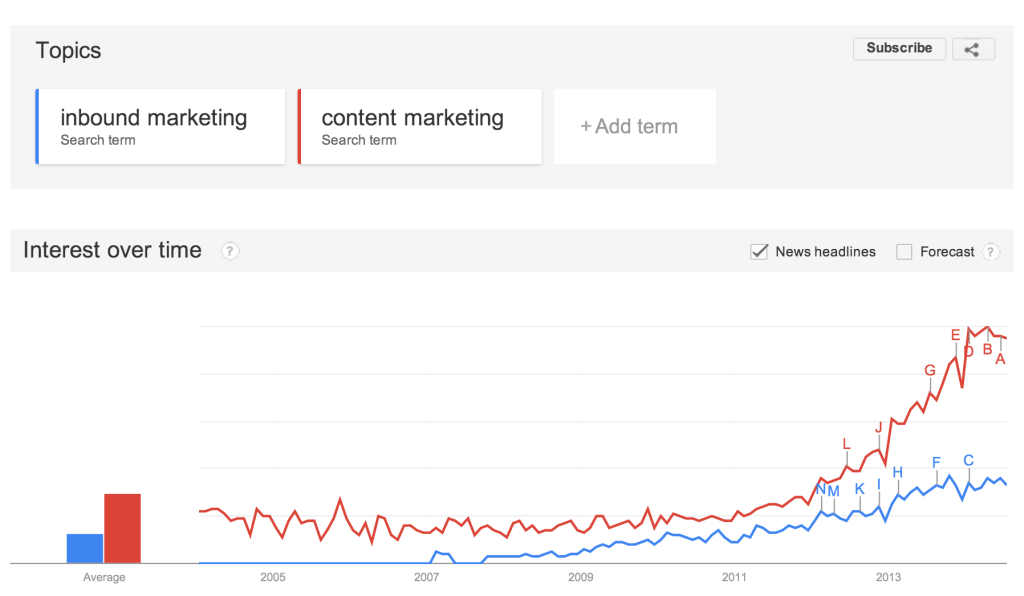What's the Difference Between Content Marketing & Inbound Marketing? (And Does It Matter?)

Inbound aficionados and content champions have long been discussing (and dissecting) the difference between inbound marketing and content marketing. (We even added our two cents here on our blog, which was republished by PRDaily.com. The above graphic shows how we differentiate the two terms.)
But now the conversation has started anew.
Why? During his opening remarks at MozCon 2014, Rand Fishkin (the mustachioed founder at Moz) said:
“inbound marketing” as terminology is losing to “content marketing.”
And it’s true. Check out Google Trends:

(image via Google Trends)
This started some pretty interesting conversations across these friendly Internets of ours. Well, interesting if you’re content marketing nerds like us. Inbound.org has a great running discussion on inbound vs. content going. Here’s a sample:



(discussion images via Inbound.org)
You can download Rand’s presentation in the Monday, July 14 Agenda area of the MozCon website, and I highly suggest you do. He gets into more detail about the content vs. inbound discrepancy and the interchangeable use of the terms outside the industry, but he also reviews and analyzes the five biggest trends from the last year of web marketing. It’s definitely worth a glance.
So friends, what do you think? Is it just semantics, or is there value to having different terminology to describe inbound marketing and content marketing? And in the end … does it matter?
My opinion remains the same: Though both content marketing and inbound marketing are important in today’s consumer-driven world, emphasizing the development of smart, relevant, and authentic content (content marketing) should be the main goal, supported by a strong strategy for being found online (inbound marketing).
If you don’t focus on providing good content, your inbound marketing will fail. Even if you capture attention with your calls to action and landing pages, you’ll lose your target when you don’t follow through with intelligent, entertaining content.
But feel free to disagree. Let’s get this discussion going in the comments below, or over on Twitter and Google+.
MORE ARTICLES
- 20 Best Productivity Tips for Small Businesses
- Feeling Blah? Get Your Groove Back with These 3 Tips
- Happy Holidays from Cursive Content Marketing
- This Is What Happens When the World’s Fastest Growing Fitness Craze Thinks Outside the Box
- Finding Your Voice: 20 Best Tips for Creating Authority, Authenticity and Individuality in Your Content Marketing
- 20 Best Tips for Setting, Tracking and Measuring Content Marketing Goals
- Content Marketing Summer School for School Communicators: Top Article Roundup
- What Does the Term "Content Marketing" Mean to You?